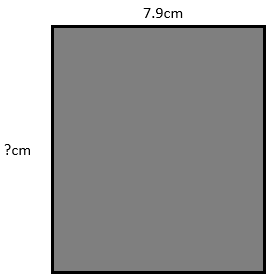The purpose of this activity is to support students measuring the areas and perimeters of rectangle when the side lengths include simple fractions.
- Copymaster
- Rulers
- Squared paper
- Calculators
- Remind students how the area and perimeter of a rectangle can be found using the side lengths. Draw a rectangle measuring 20cm x 15cm on a large sheet of paper. Let students use calculators if needed.
What is the perimeter of this rectangle? (2 x (20 + 15) = 2 x 35 = 70cm)
What is the area of this rectangle? (20 x 15 = 300cm2).
- Provide the students with copies of the Copymaster and calculators.
What do you notice about all these rectangles? Look for students to recognise that many of the side lengths are decimals and fractions.
Your task is to find the area and perimeter of each rectangle.
Put the rectangles in order by area then order them by perimeter.
Are the orders the same?
You might introduce relevant te reo Māori kupu such as roa (length), tapawhā hāngai (rectangle), paenga (perimeter), and horahanga (area).
- Let the students work in pairs to calculate areas and perimeters. Organise students in pairs that will encourage peer scaffolding and extension, as well as productive learning conversations. Roam as they work and look for students to:
- collect part units to form whole units, such as two halves to make one unit
- use whole number multiplication to calculate most of the area in each rectangle
- convert fractions of units to decimals
- use multiplication on the calculator to find both perimeters and areas.
At times during the investigation, you might gather the students, or ask pairs, to discuss the important teaching points.
- After sufficient progress is made gather the group. Discuss, focusing on strategies for dealing with partial units of both length and area. This might include discussion of the following:
- Changing fractions to decimals to find areas by multiplication. For example, the two rectangles below both have an area of 5 x 8.75 = 43.75 square units.
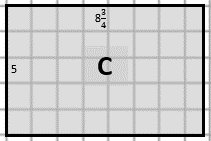
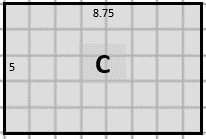
- Adding fractions and decimals to find perimeters. For example, the perimeter of this rectangle equals 2 × (6½+5½) = 2 × 13 = 26 units.
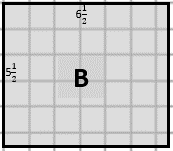
- Finding fractions of fractions of a unit. For example, the shaded area is one half of one half (1/2 × 1/2 = 1/4).
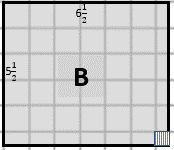
The areas and perimeters are shown below. Note that the orders are different for area and perimeter.
Rectangle A B C D E Area 38 sq units 35.75 sq units 43.75 sq units 40 sq units 30 sq units Perimeter 27 units 26 units 27.5 units 30 2⁄3 units 29 units
Next steps
- Provide rectangles with decimal side lengths for students to measure, then use to work out areas and perimeters. Encourage students to estimate the areas before calculating. For example, the rectangle below measures 12.8cm x 7.4cm so an estimate of 13 x 7 = 91cm2 is reasonable for area and 2 x (13 + 7) = 40cm is reasonable for perimeter.
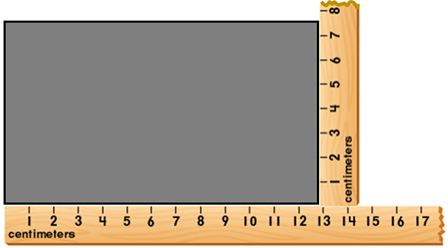
- Extend area and perimeter with problems to include situations wwhere area or perimeter is given but a side length is not. Two examples might be:
The perimeter is 42.2 cm. What is the width of the rectangle?
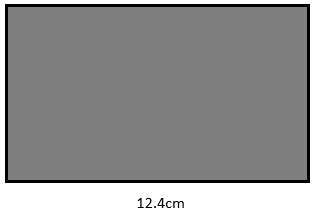
The area is 99.54cm2. What is the width of the rectangle marked ?
